Some time ago, Doubleeboy asked me for some pics of my tools but my camera was on loan for some time - I just got it back. I was sorely tempted to grind some new tools to show but decided to show a few of my oldest working tools instead. Two of these are very old and used and in need of regrinding, and my aluminum cutter is only a few months old.
Each of these tools is honed with a diamond hone after every use and show some marks but I assure you they are sharp enough to easily slice paper or a finger. Oh, and they cut metal well, too.
Shown here are my 15 year old Knife Tool, a cutter for tool steels/1144 steel, and an aluminum cutting tool:
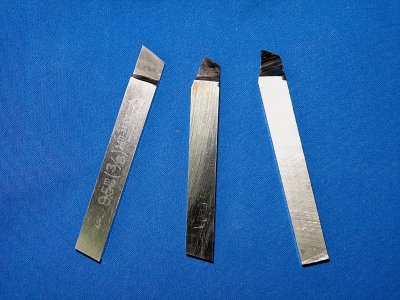
This is the top and side cutting edge of my cobalt Knife Tool. As you can see, its time to regrind it; most of the back rake has been ground off but it still cuts so well that it sort of justifies my laziness. This tool faces everything I put it to with a mirror finish and will cut a very tight, clean shoulder. It also can take a cut in thin work pieces so fine that the chips come off like dust. I made this tool about 15 years ago, never reground it and it still cuts like new.
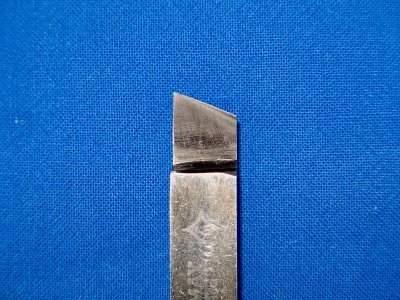
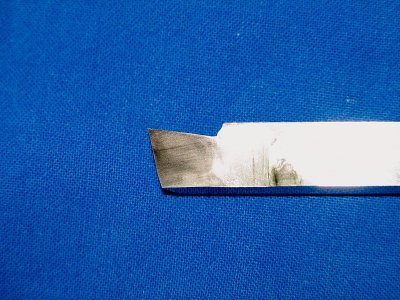
Here is my tool steel cutter. This tool is very old, probably 10 years since it saw a grinder, and should have been reground a long time ago. The tool marks on the top face are from my hone, not grind marks. The side and end relief angles and the side rake angles are all larger than normal to enhance the tool's performance in harder steels. As you can see, the back rake has been mostly honed off over time and needs to be re-established. Still, this tool will take a roughing cut in 1144 steel without work hardening it much, which allows a fine sizing or finishing cut. It has more mass in its overall shape to allow for the increased tool angles.
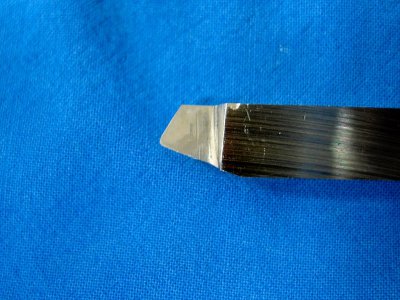
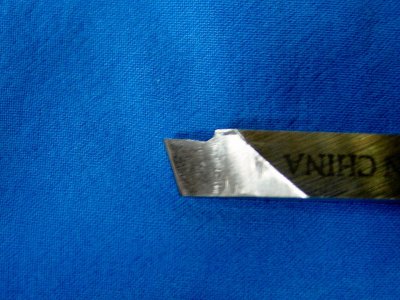
Here is an Aluminum cutter I ground a few months ago. This tool has a general shape but since it is ground on a belt sander the rake angles look weird. When it is ground the belt is shifted off to the side of the platen by about 1/16"; this prevents the belt from being cut as I grind. Due to the extreme back rake angle of about 40 degrees the tool tends to push the belt back toward the center of the platen. As it does so, it cuts a curve into the side and back rake angles. The angles are correct but the shape is distorted; there is a curve rather than a definite step as we would normally see. This is not an issue for tools with normal amounts of back rake but on aluminum cutters, it can be. While this technicality exists, the tool cuts fine and this tool can take a very heavy cut while leaving a clean finish. I sharpen the side and end with a normal diamond hone but use a round diamond hone to hone the rake angles. You can see some residual grind marks on the top because I can't get them all out without altering the rake angles so I just get the edge razor-sharp and leave it at that. When the chips come off they curl tightly, which is nice.
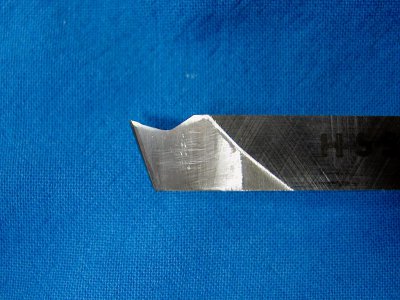
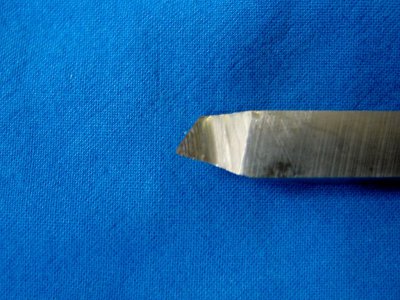
As I said, it was tempting to grind new tools so I could show off. I can actually grind a really pretty tool but that isn't what Doubleeboy asked for. These are some of my most frequently used working tools that are all modified to do what I want them to do. My other tools are also general purpose tools with varying amounts of modified relief and rake angles to suit different material classes.
I chose these tools because I wanted to point something out. All of them have highly modified rake and relief angles, or used to when they were new. The shape of the steel and aluminum cutters shown here have more mass to allow for these changes. That is, the side cutting edge angle is less acute than my normal general purpose shape would have. This is just my personal approach - when I increase relief and rake angles a lot then I add more mass in the tip to support those changes. This is especially true when the material being cut is hard, like my tool steel cutter, or when the rake and relief angles create a very positive angle at the tip which makes the tip more fragile, like my aluminum cutter. More mass adds strength.








